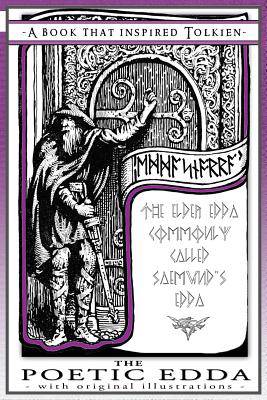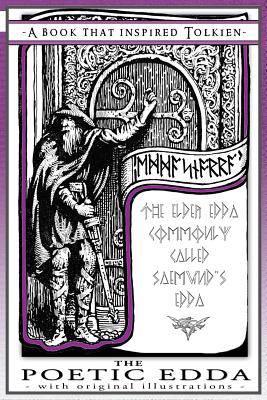
- Retrait gratuit dans votre magasin Club
- 7.000.000 titres dans notre catalogue
- Payer en toute sécurité
- Toujours un magasin près de chez vous
- Retrait gratuit dans votre magasin Club
- 7.000.0000 titres dans notre catalogue
- Payer en toute sécurité
- Toujours un magasin près de chez vous
The Poetic Edda - A Book That Inspired Tolkien
With Original Illustrations
Description
The Poetic Edda, also known as The Elder Edda or Saemund's Edda, is a magnificent and magical collection of thirty-four Icelandic poems, interwoven with prose, dating from the 9th century to the 12th. The original Old Norse verses are printed here, side by side with English translations.
The collection includes the archetypal stories about wise Odin, hammer-wielding Thor, mischievous Loki and the other gods and goddesses of Asgard.
Professor J. R. R. Tolkien, author of The Lord of the Rings and The Hobbit, readily acknowledged his debt to this source. He was sixteen years old when the Viking Club of London published this beautifully illustrated translation by Olive Bray. Readers of Tolkien's work will easily spot his inspirations--the names of the dwarves in The Hobbit; riddle games; Mirkwood; the Paths of the Dead; an underworld creature being tricked into remaining above-ground until dawn, when sunlight turns him to stone; different races calling a single thing by various names, and more.
In the Poetic Edda the realm where man dwells is called "Midgarth", which translates as "Middle-earth". Elves are mentioned, and there are dwarves called Thorin, Nori, Dori, Ori, Gloin, Fili, Kili Bifur, Bafur, Bombur, and Oaken-shield. The names Thrainn and Thror are mentioned, as is the name Gandalf, which Bray translates as "Wand-elf". Tolkien's Gandalf, of course, carries a staff, or wand.
The poems features a dragon called Fierce-stinger:
"Fares from beneath a dim dragon flying,
a glistening snake from the Moonless Fells.
Fierce-stinger bears the dead on his pinions
away o'er the plains. I sink now and cease."
The language is archaic, so for 21st century readers a glossary is provided at the back of this book, as well as an index of names to help identify all the characters. Bray's lengthy introduction has also been revised for modern readers, and some footnote citations omitted; all else remains exactly as it was in Tolkien's time.
Remarkably in Bray's edition, the original Icelandic text was included. This would have appealed to Tolkien, as a philologist. He must have relished comparing the English words with the Icelandic, page by page.
Illustrator W. G. Collingwood was an English author, artist, antiquary and professor. In 1897 he travelled to Iceland where he spent three months exploring the actual sites that are the settings for the medieval Icelandic sagas. He produced a large number of sketches and watercolours during this time and published an illustrated account of his expedition in 1899. His study of Norse and Anglican archaeology made him widely recognized as a leading authority, and his gorgeous Art Nouveau-style illustrations for the Bray edition are rich with symbolism.
The Poetic Edda, the most important existing source on Norse mythology and Germanic heroic legends, is part of the literature that influenced Tolkien's inner world, informing the creation of The Hobbit and The Lord of the Rings.
Spécifications
Parties prenantes
- Traducteur(s):
- Editeur:
Contenu
- Nombre de pages :
- 432
- Langue:
- Anglais
- Collection :
- Tome:
- n° 2
Caractéristiques
- EAN:
- 9781925110043
- Date de parution :
- 30-09-18
- Format:
- Livre broché
- Format numérique:
- Trade paperback (VS)
- Dimensions :
- 152 mm x 229 mm
- Poids :
- 576 g

Les avis
Nous publions uniquement les avis qui respectent les conditions requises. Consultez nos conditions pour les avis.





